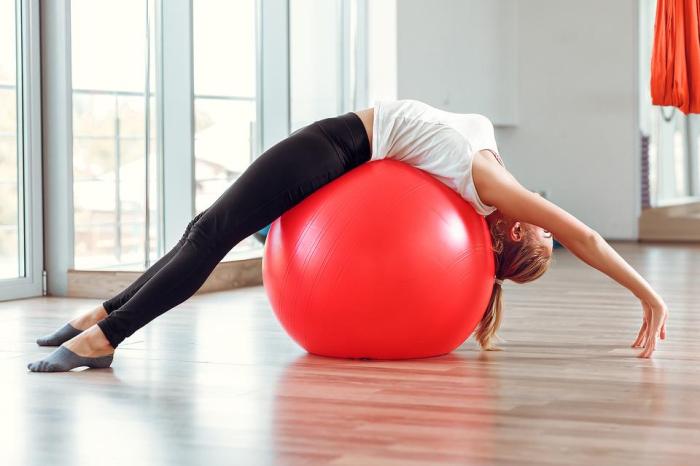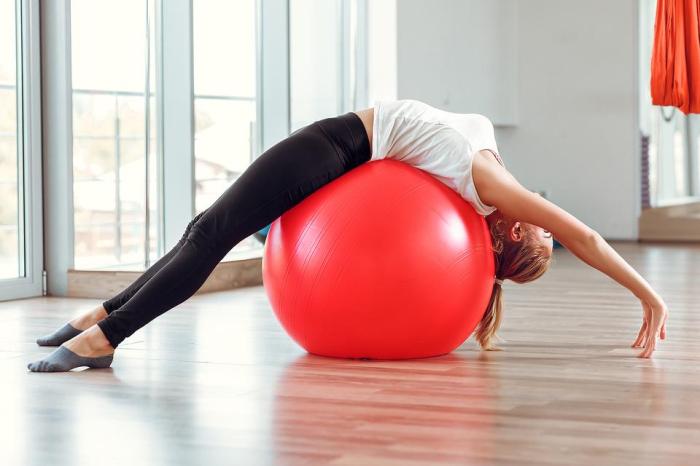
How Not to Use Exercise Balls: Avoiding Common Mistakes
How Not to Use Exercise Balls: Avoiding Common Mistakes – Exercise balls are a popular and versatile piece of equipment for fitness enthusiasts, offering a wide range of benefits. However, like any workout tool, improper use can lead to injuries and hinder progress.
From selecting the right size to understanding safety precautions, there are several crucial factors to consider when incorporating exercise balls into your routine.
This guide will delve into the common mistakes people make when using exercise balls, providing insights into how to avoid them and maximize your workout experience. We’ll cover everything from proper inflation and deflation techniques to the importance of maintaining good posture and balance.
By understanding these key principles, you can ensure safe and effective workouts, allowing you to reap the full benefits of this dynamic exercise tool.
Common Mistakes to Avoid: How Not To Use Exercise Balls

Using an exercise ball can be a fun and effective way to enhance your workouts, but it’s crucial to understand the correct techniques to avoid injuries and maximize your results. Improper posture, poor balance, and overexertion are common pitfalls that can hinder your progress and even lead to discomfort.
Common Mistakes and Their Consequences
Understanding the common mistakes people make when using exercise balls is essential for safe and effective workouts. These mistakes can lead to reduced effectiveness, discomfort, and even injuries.
- Improper Posture:Incorrect posture while using an exercise ball can lead to strain on your back, neck, and shoulders. It’s crucial to maintain a neutral spine, with your shoulders relaxed and your core engaged.
- Poor Balance:Exercise balls challenge your balance, and if you’re not careful, you could lose your footing and fall. This can result in injuries, especially if you’re performing exercises that require a lot of movement.
- Overexertion:Pushing yourself too hard can lead to muscle fatigue and strain, which can increase your risk of injury. It’s important to start slowly and gradually increase the intensity and duration of your workouts.
Exercises Often Performed Incorrectly
Several exercises are commonly performed incorrectly on exercise balls, leading to reduced effectiveness and potential injury.
- Crunches:A common mistake is arching the back during crunches, which puts strain on the spine. Instead, keep your core engaged and your back flat.
- Push-ups:Placing your hands too close together or too far apart can strain your wrists and shoulders. Aim for a shoulder-width grip and maintain a straight line from your head to your heels.
- Plank:A common error is sagging in the middle, which can put stress on your lower back. Keep your core engaged and your body in a straight line from your head to your heels.
Proper Techniques for Common Exercises
Here’s a comparison of proper and improper techniques for performing various exercises on exercise balls:
| Exercise | Proper Technique | Improper Technique |
|---|---|---|
| Crunches | Keep your back flat, core engaged, and your head in line with your spine. Avoid arching your back. | Arching your back, straining your neck, and not engaging your core. |
| Push-ups | Maintain a straight line from your head to your heels, with your hands shoulder-width apart. Avoid letting your hips sag or your back arch. | Placing your hands too close together or too far apart, letting your hips sag, or arching your back. |
| Plank | Keep your body in a straight line from your head to your heels, with your core engaged. Avoid sagging in the middle or letting your hips rise. | Sagging in the middle, letting your hips rise, or not engaging your core. |
Avoiding Common Mistakes
To avoid common mistakes and ensure a safe and effective workout, consider the following:
- Start Slowly:Begin with simpler exercises and gradually increase the difficulty and intensity as you gain strength and balance.
- Focus on Form:Prioritize proper form over speed or weight. Pay attention to your posture and engage your core throughout your workouts.
- Use Proper Equipment:Ensure your exercise ball is the right size for your height and weight. A ball that is too small or too large can compromise your balance and increase your risk of injury.
- Listen to Your Body:Pay attention to any pain or discomfort. Stop the exercise and rest if you feel any unusual sensations.
When Exercise Balls are Not Recommended

While exercise balls offer numerous benefits, they are not suitable for everyone. Certain situations and conditions may pose risks and make it unwise to use an exercise ball.
Pregnancy
Using exercise balls during pregnancy can be risky, especially in the later stages. As the pregnancy progresses, the center of gravity shifts, making balance challenging. This increased risk of falls can lead to injuries for both the mother and the fetus.
Medical Conditions, How not to use exercise balls
Individuals with certain medical conditions should avoid using exercise balls. These conditions include:
- Balance Disorders:Exercise balls require good balance, which can be compromised in individuals with balance disorders. This could lead to falls and injuries.
- Joint Instability:Exercise balls can put additional stress on joints, which may be problematic for individuals with joint instability or recent injuries.
- Back Pain:While exercise balls can be beneficial for some back pain, they can also exacerbate existing back pain or cause new pain if not used correctly.
- Cardiovascular Conditions:Individuals with cardiovascular conditions should consult with their healthcare professional before using exercise balls, as the increased heart rate and exertion can pose risks.
Lack of Core Strength
Using an exercise ball requires significant core strength to maintain stability and balance. Individuals with weak core muscles may find it challenging to control their body on the ball, increasing the risk of falls and injuries.
It’s essential to consult with a healthcare professional before using an exercise balls, especially if you have any medical conditions or concerns. They can assess your individual needs and provide guidance on safe and effective exercise options.
Okay, so you’re thinking about getting an exercise ball, which is great! But before you start bouncing around like a kangaroo, let’s talk about some things you should avoid. For instance, don’t use it as a makeshift doorstop like you might with a autumn tree door – those are designed for stability, not for supporting your weight.
Trust me, you don’t want to end up rolling across the room! So, remember, exercise balls are fantastic tools for fitness, but they’re not meant for everything.
Okay, so you’re thinking about getting an exercise ball, but hold on! Before you start bouncing around like a kangaroo, check out some yard sale tips from the pros to see if you can snag one for cheap. That way, if you end up hating it, you won’t feel so bad about wasting money.
And remember, using an exercise ball is about more than just sitting on it – you need proper form and technique to avoid injuries. So, do your research and be safe!
Exercise balls can be a great way to add variety to your workouts, but they’re not without their risks. One common mistake is not ensuring a stable base, which can lead to falls and injuries. To avoid this, make sure your exercise ball is placed on a firm, flat surface.
If you’re looking for a way to keep your workout space organized, a 3 metal magnet board can be a great addition. You can use it to store your weights, resistance bands, and other equipment, keeping everything within easy reach.
Just make sure to use a sturdy ball that’s the right size for you, and always listen to your body and stop if you feel any pain.





